 Your new post is loading...
 Your new post is loading...

|
Scooped by
Ed Rybicki
October 17, 2012 4:16 AM
|
"International partners and experts of the coalition against poliomyelitis will analyze on Tuesday here the possibility for the creation of an injectable vaccination against the disease in the African region, in combination of others for children, Angop has learnt. The WHO general director for Africa, Luis Gomes Sambo, that chaired the act, said Angola is a country where was recorded important progress, having the polio cases reduced from 33 to zero cases, in 2011, in 18 municipalities. Angola has not recording polio cases for years, a deed that puts the country the challenge of consolidating the interruption of circulation of the poliomyelitis virus, through a greater effort of the infantile immunity. In Africa, only Chad and Nigeria have active transmission of poliomyelitis virus." What they mean is that Angola - and other countries where it has been eradicated - should possibly switch from the live attenutated oral poliovirus to the "killed" poliovirus vaccine, which is injectable: this is because use of the killed vaccine would eliminate any vaccine-related strains which may be circulating, and which could mutate back to virulence.

|
Scooped by
Ed Rybicki
October 17, 2012 4:05 AM
|
MELBOURNE researchers have developed cows' milk that can defend human cells against HIV. Lead researcher, University of Melbourne's Marit Kramski said they vaccinated pregnant cows - which cannot contract human immunodeficiency virus - with an HIV protein [Env?] and studied the first milk produced by the cow after birth. HIV cases in Australia on the rise Dr Kramski said this first milk, called colostrum, produced milk high in antibodies to protect its newborn against disease. The researchers were able to inhibit the virus from infecting cells when "combing the virus cells with milk" [sic - I think they mean combining the virus with milk containing antibodies]. I think this is very interesting, and has potential for trial in monkeys - not humans, because there is the little problem of the antibodies that would go into a virucidal cream being from cows - meaning they would elicit an immune response, unlike the humanised anti-HIV monoclonals being made in plants by the Fraunhofer Institute. Still, using cow's milk is an inventive thing to do - and sounds like a very cheap source of antibodies. Except that colostrum is ONLY produced immediately after birth of a calf, so it will nothing like as cheap as milk.

|
Scooped by
Ed Rybicki
October 16, 2012 8:28 AM
|
"Mange epidemic in vicunas
-------------------------
Vicunas in Pampa Galeras [Reserve, in Ayacucho province, Lucanas region] are in peril, according to Juan Martinez Madueno, the director of Lucanas Agriculture Agency, who pointed out that mange is increasing in these animals, a symbol of the Peruvian richness.
"Two days ago (10 Oct 2012) we found more than 20 animals with mange out of 300 captured in Pampas Galeras. This is worrisome because the contagion is almost immediate," Martinez said. He added that during the survey they found around 15 dead vicunas.
The ministry of agriculture is the main responsible for the control of epidemics, said Martinez, "nonetheless, very little has been done since the disease emerged more than 6 years ago."
It is noteworthy that the death of a vicuna means a USD 1000 loss." Some diseases have such interesting names, and infect such interesting animals, one just HAS to cover them. Even if they're not viruses.

|
Scooped by
Ed Rybicki
October 16, 2012 7:09 AM
|
IN a move to reduce cost of storage of vaccines as well as raise the success rates of immunisation programmes in areas where the integrity of the cold chain process cannot be guaranteed, a team of researchers from the University of Oxford, in the United Kingdom, has discovered a new technology tagged “Thermostable HydRIS vaccine technology” for keeping vaccines stable without need for fridges or freezers.

|
Scooped by
Ed Rybicki
October 15, 2012 6:54 AM
|
"Since public health officials began recommending in 2006 that young women be routinely vaccinated against HPV, many parents have hesitated over fears that doing so might give their children license to have sex.... They selected a group of 1,398 girls who were 11 or 12 in 2006 — roughly a third of whom had received the HPV vaccine — and followed them through 2010. The researchers then looked at what they considered markers of sexual activity, including pregnancies, counseling on contraceptives, and testing for or diagnoses of sexually transmitted diseases. Over all, in the time that the girls were followed, the researchers did not find any differences in these measures between the two groups." So vaccinating your child against HPV does NOT result in them being more promiscuous.

|
Scooped by
Ed Rybicki
October 11, 2012 9:25 AM
|
A man is being treated for Crimean Congo Viral Haemorrhagic Fever - a deadly tropical disease - in complete isolation in a Glasgow hospital.

|
Scooped by
Ed Rybicki
October 11, 2012 9:07 AM
|
Virologists making mutated versions of the H5N1 bird flu halted their research in January after a U.S. government advisory panel suggested that their work, though well-intentioned, had the potential to endanger the public . ... An essay coauthored by Fouchier and Kawaoka, with researcher Adolfo García-Sastre, argues that research that has already received approval should be permitted to resume. “It is unreasonable to extend the pause on H5N1 transmission research until every country has made a final decision” on how to proceed, they wrote. “To contribute meaningfully to pandemic preparedness, we need to conduct more experiments to better understand transmission of H5N1 viruses in mammals, in a timely manner.” For now, the work remains at a halt. As of Wednesday, the World Health Organization reported that 359 people had died between 2003 and 2012 after catching H5N1 — nearly 60% of confirmed cases. http://mbio.asm.org/ Thanks Ken Y A-B!

|
Scooped by
Ed Rybicki
October 11, 2012 8:55 AM
|
Food-safety bodies slam feeding study that claims increased cancer incidence in rats.

|
Scooped by
Ed Rybicki
October 9, 2012 7:19 AM
|
A vaccine that stops the body reacting to one of the main ingredients in bread could allow thousands of coeliac sufferers to eat a normal diet.

|
Scooped by
Ed Rybicki
October 9, 2012 7:08 AM
|
The return of diseases such as measles and pertussis call for a Europe-wide response, according to Dr Karin Kadenbach, a member of the European Parliament | Vaccines Today.

|
Scooped by
Ed Rybicki
October 7, 2012 11:41 AM
|
"A global HIV-1 vaccine will likely need to induce immune responses against conserved HIV-1 regions to contend with the profound genetic diversity of HIV-1. Here we evaluated the capacity of immunogens consisting of only highly conserved HIV-1 sequences that are aimed at focusing cellular immune responses on these potentially critical regions. We assessed in rhesus monkeys the breadth and magnitude of T lymphocyte responses elicited by adenovirus vectors expressing either full-length HIV-1 Gag/Pol/Env immunogens or concatenated immunogens consisting of only highly conserved HIV-1 sequences. Surprisingly, we found that the full-length immunogens induced comparable breadth (P = 1.0) and greater magnitude (P = 0.01) of CD8+ T lymphocyte responses against conserved HIV-1 regions compared with the conserved-region-only immunogens. Moreover, the full-length immunogens induced a 5-fold increased total breadth of HIV-1-specific T lymphocyte responses compared with the conserved-region-only immunogens (P = 0.007). These results suggest that full-length HIV-1 immunogens elicit a substantially increased magnitude and breadth of cellular immune responses compared with conserved-region-only HIV-1 immunogens, including greater magnitude and comparable breadth of responses against conserved sequences.`' Whole natural-looking proteins are better than artificial epitope collections: so let's do more clinical trials!!

|
Scooped by
Ed Rybicki
October 5, 2012 3:08 PM
|
CRIMEAN-CONGO HAEMORRHAGIC FEVER - UK: (SCOTLAND ex AFGHANISTAN)
AIRLINE PASSENGER
**********************************************************************************
A ProMED-mail post
<http://www.promedmail.org>
ProMED-mail is a program of the
International Society for Infectious Diseases
<http://www.isid.org> Date: Thu 5 Oct 2012
Source: BBC News Glasgow and West Scotland [edited]
<http://www.bbc.co.uk/news/uk-scotland-glasgow-west-19846300>; Glasgow Crimean-Congo viral haemorrhagic fever case flown to London
- -------------------------------------------------------------------
A man critically ill with Crimean-Congo viral haemorrhagic fever (CCVHF) has been flown from Glasgow to London in a special RAF [Royal Air Force] isolation plane. The 38-year-old, who had been in Kabul, Afghanistan, was diagnosed hours after returning to Glasgow on Emirates flight EK027 from Dubai on Tuesday [2 Oct 2012]. He was transferred from the city's specialist Brownlee unit [Gartnavel Hospital] to the Royal Free Hospital in London on Friday morning [5 Oct 2012]. Passengers who sat near the man have been contacted and have no symptoms. NHS Greater Glasgow and Clyde (GGC) said medical staff would continue to follow up with passengers on the flight from Dubai. The health authority said the risk to all other passengers was "extremely low" and advised anyone with concerns to contact NHS 24 [Emergency Telephone Service]. This is the 1st case of CCVHF in the UK. NHS GGC said the patient's transfer was "in line with the UK-wide protocol for the management of diseases of this severity and rarity." The man was stabilised overnight before being moved in specialist isolation facilities by air with the support of the Scottish Ambulance Service and the RAF. Public health consultant, Dr Syed Ahmed, who is coordinating the investigations into this case, said: "The risk of person-to-person transmission of Crimean Congo Viral Haemorrhagic Fever is extremely low as it can only be transmitted by direct contact with infected blood or body fluids. It is not a virus which is transmitted through the air. As such the risk to those who were in close contact with him is minimal. We have already made contact with all the patient's close contacts and they are being followed-up appropriately. The decision to transfer the patient to the high security unit at the Royal Free was taken in line with the national protocol for the management of cases such as this."

|
Scooped by
Ed Rybicki
October 5, 2012 2:52 AM
|
Or: herpesvirus is a phage.... It is estimated that 90% of the world's adult population is infected with Herpes Simplex Virus (HSV), which is responsible for causing cold sores, blindness, encephalitis, even death. One problem faced by all viruses is how to ensure that their genetic material enters the host cell. In viruses that infect bacteria (bacteriophage), genome transfer from the virus into the cell is carried out by a specialized structure known as the tail. Studies have shown that bacteriophage and herpesviruses share a common evolutionary origin. However, until now, no tail-like structure has been seen in herpes. We have used newly developed electron microscopy based techniques to identify a structure in HSV, which recapitulates features of the bacteriophage tail and may also be involved in release of DNA from the virus particle at the nuclear pore. Such advances in understanding the structures that drive virus replication may suggest new therapeutic targets to counter viral infection.
|

|
Scooped by
Ed Rybicki
October 17, 2012 4:06 AM
|
The great northwest of the U.S.is known for its natural beauty. It’s also a high-tech region with a highly educated public – ...(To vaccinate, or not to vaccinate...a report that suggests you should:

|
Scooped by
Ed Rybicki
October 16, 2012 8:32 AM
|
This interview was originally broadcast on Oct. 11, 2011. The Viral Storm will be published in paperback on Oct. 16. The New Yorker once called virologist Nathan Wolfe "the world's most prominent virus hunter." Wolfe, the director of the Global Viral Forecasting Initiative, spends his days tracking emerging infectious diseases before they turn into deadly pandemics. Fun job: I am going to have to make looking for viruses in deserts sound more cool...B-) Thanks Kenneth Y A-B!

|
Scooped by
Ed Rybicki
October 16, 2012 7:14 AM
|
"The initial findings of official reports on lessons learned from the 2009 H1N1 pandemic have focused largely on the need for a new platform to speed the production of the vaccine, he said. The CCIVI group's efforts to document as rigorously as possible the value and effectiveness of current vaccines produced a startling conclusion that influenza vaccines are not only cumbersome to produce, but even in seasons when there is a strong match between the vaccine and circulating strains, "the benefit in terms of lives saved, which essentially meant the elderly, was minimal at best," Sommer said. Efficacy gaps and cumbersome production requirements meant that the primary issue had to be a major investment of money and effort to create a radically new vaccine, he said. "One that conferred greater protection for those most likely to become seriously ill and die, but also one that would not need to be reformulated and administered so frequently."" Interesting stuff...challenging paradigms and doctrines athat we have taken for granted for years. Influenza virus graphic courtesy of Russell Kightley Media

|
Scooped by
Ed Rybicki
October 16, 2012 7:07 AM
|
600 Varsity Students Circumcised in HIV CampaignAllAfrica.comA weeklong campaign against HIV/AIDS that was concluded at the National University of Rwanda left at least 670 students circumcised while 360 underwent voluntary testing and counselling. Just the tip of the problem...B-)

|
Scooped by
Ed Rybicki
October 13, 2012 8:01 AM
|
"During the pandemic [Influenza A(H1N1)pdm09] period in 2009-2010, an influenza A (Inf-A) virus with H1N2 subtype (designated as A/Eastern India/N-1289/2009) was detected from a 25 years old male from Mizoram (North-eastern India). The outcome of this full genome study revealed a unique reassortment event where the N-1289 virus acquired it's HA gene from a 2009 pandemic H1N1 virus with swine origin and the other genes from H3N2-like viruses of human origin. Conclusions
This study provides information on possibility of occurrence of reassortment events during influenza season when infectivity is high and two different subtypes of Inf Aviruses co-circulate in same geographical location." This is interesting, and sobering news: it shows how easily this sort of thing can happen; it is perhaps fortunate that both the NA of the new virus came from a circulating type, as otherwise the virus could have spread as far and been as serious as the new H1N1. I thank Russell Kightley for the reassortant influenza virus graphic.

|
Scooped by
Ed Rybicki
October 11, 2012 9:20 AM
|
Inovio Pharmaceuticals, Inc. (NYSE MKT: INO) announced today clinical results indicating that its VGX-3100 therapeutic synthetic vaccine is capable of not only driving robust immune responses to antigens from high risk types of human papillomavirus (HPV) infection but that these immune responses displayed a powerful killing effect on cells changed by HPV into precancerous dysplasias. This desirable effect may ultimately contribute to the regression or elimination of cervical dysplasia and cervical cancer. Inovio is currently assessing the ability of its DNA-based VGX-3100 to treat cervical dysplasias caused by HPV infection in a global phase II trial. Results from this phase I trial appeared today in the peer-reviewed journal, Science-Translational Medicine, in an article entitled, "Immunotherapy against HPV 16/18 generates potent Th1 and cytotoxic cellular immune responses." Cervical cancer graphic courtesy Russell Kightley Media

|
Scooped by
Ed Rybicki
October 11, 2012 9:02 AM
|
"Risk for Hepatitis A exists even for travelers staying in urban areas and luxury hotels." There's a vaccine for that...B-)

|
Scooped by
Ed Rybicki
October 9, 2012 7:24 AM
|
Novavax Initiates Phase 2 Clinical Trial of RSV Vaccine Candidate Rockville, MD (October 8, 2012)–/GlobeNewswire/-Novavax, Inc. (Nasdaq: NVAX) today announced that enrollment has begun in a Phase 2 dose-ranging clinical trial of its respiratory syncytial virus (RSV) vaccine candidate in women of childbearing age. The study is being conducted in collaboration with PATH, an international nonprofit organization that transforms global health through innovation, which is providing approximately $2 million in funding to support the trial. This randomized, blinded, placebo-controlled Phase 2 study will evaluate the immunogenicity and safety of two dose levels of Novavax’s RSV-F protein nanoparticle vaccine with and without aluminum phosphate as an adjuvant. The study will enroll 330 women of childbearing age who will receive either one or two intramuscular injections at each dose level of vaccine or placebo at days 0 and 28. Safety and immunogenicity will be evaluated over six and four month periods, respectively.

|
Scooped by
Ed Rybicki
October 9, 2012 7:17 AM
|
The study, published in the Archives of Pediatrics & Adolescent Medicine, found the only side effects associated with the HPV vaccine were same-day fainting and skin infections in the two weeks after vaccination. "The findings from this large, comprehensive study did not detect any evidence of serious safety concerns secondary to HPV4," Klein and colleagues said."These findings support the general safety of routine vaccination with HPV4 to prevent cancer." ... The authors noted the association between HPV4 vaccine and fainting was not unexpected because immunization and injections in general have a known association -- especially with this age group. Read more: http://www.upi.com/Health_News/2012/10/08/Fainting-skin-issues-linked-to-HPV-shots/UPI-27371349734401/#ixzz28ndkc1MA

|
Scooped by
Ed Rybicki
October 7, 2012 12:30 PM
|
"African horsesickness (AHS) is a devastating disease of horses. The disease is caused by the double-stranded RNA-containing African horsesickness virus (AHSV). Using electron cryomicroscopy and three-dimensional image reconstruction, we determined the architecture of an AHSV serotype 4 (AHSV-4) reference strain. The structure revealed triple-layered AHS virions enclosing the segmented genome and transcriptase complex. The innermost protein layer contains 120 copies of VP3, with the viral polymerase, capping enzyme, and helicase attached to the inner surface of the VP3 layer on the 5-fold axis, surrounded by double-stranded RNA. VP7 trimers form a second, T=13 layer on top of VP3. Comparative analyses of the structures of bluetongue virus and AHSV-4 confirmed that VP5 trimers form globular domains and VP2 trimers form triskelions, on the virion surface. We also identified an AHSV-7 strain with a truncated VP2 protein (AHSV-7 tVP2) which outgrows AHSV-4 in culture. Comparison of AHSV-7 tVP2 to bluetongue virus and AHSV-4 allowed mapping of two domains in AHSV-4 VP2, and one in bluetongue virus VP2, that are important in infection. We also revealed a protein plugging the 5-fold vertices in AHSV-4. These results shed light on virus-host interactions in an economically important orbivirus to help the informed design of new vaccines." Well done all! Nice piece of science, largely out of Africa, on an African virus. AND they got the cover!

|
Scooped by
Ed Rybicki
October 7, 2012 9:37 AM
|
"The discovery of broadly neutralizing antibodies that recognize highly conserved epitopes in the membrane-proximal region of influenza virus hemagglutinin (HA) has revitalized efforts to develop a universal influenza virus vaccine. This effort will likely require novel immunogens that contain these epitopes but lack the variable and immunodominant epitopes located in the globular head of HA. As a first step toward developing such an immunogen, we investigated whether the 20-residue A-helix of the HA2 chain that forms the major component of the epitope of broadly neutralizing antibodies CR6261, F10, and others is sufficient by itself to elicit antibodies with similarly broad antiviral activity. Here, we report the multivalent display of the A-helix on icosahedral virus-like particles (VLPs) derived from the capsid of Flock House virus. Mice immunized with VLPs displaying 180 copies/particle of the A-helix produced antibodies that recognized trimeric HA and the elicited antibodies had binding characteristics similar to those of CR6261 and F10: they recognized multiple HA subtypes from group 1 but not from group 2. However, the anti-A-helix antibodies did not neutralize influenza virus. These results indicate that further engineering of the transplanted peptide is required and that display of additional regions of the epitope may be necessary to achieve protection." Ummmm...so a 20-residue HA peptide dispayed on another virus-like particle didn't elicit neutralising antibodies? Sorry, not worth a JV paper AFAIAC!

|
Scooped by
Ed Rybicki
October 5, 2012 2:56 AM
|
Or: More reasons to fear the bat. "Marburg virus, like its close relative Ebola virus, can cause large outbreaks of hemorrhagic fever with case fatalities nearing 90%. For decades the identity of the natural reservoir was unknown. However, in 2007 Marburg viruses were isolated directly from Egyptian fruit bats (Rousettus aegyptiacus) that inhabited a Ugandan gold mine where miners were previously infected. Soon after, two tourists became infected with Marburg virus after visiting nearby Python Cave, a popular attraction in Queen Elizabeth National Park, Uganda. This cave also contained R. aegyptiacus bats (~40,000 animals). These events prompted a long-term investigation of Python Cave to determine if, 1) R. aegyptiacus in the cave carried infectious Marburg virus genetically similar to that found in the tourists, and 2) what ecological factors might influence virus spillover to humans. In the study, we found that, 1) approximately 2.5% of the bat colony is actively infected at any one time and that virus isolates from bats are genetically similar to those from infected tourists, and 2) specific age groups of bats (juveniles~six months of age) are particularly likely to be infected at specific times of the year that roughly coincide with historical dates of Marburg virus spillover into humans." Filovirus graphic courtesy of Russell Kightley Media
|



 Your new post is loading...
Your new post is loading...



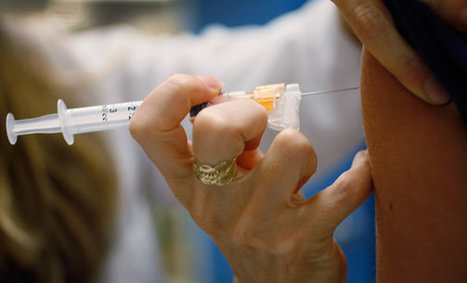





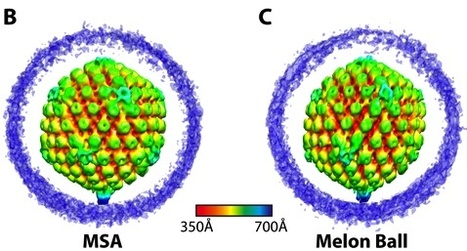
![Anti-vaccine movement causes the worst whooping cough epidemic in 70 years [in the US] | Virology News | Scoop.it](https://img.scoop.it/TspR7RGaPZL8QjWI8BtFnjl72eJkfbmt4t8yenImKBVvK0kTmF0xjctABnaLJIm9)
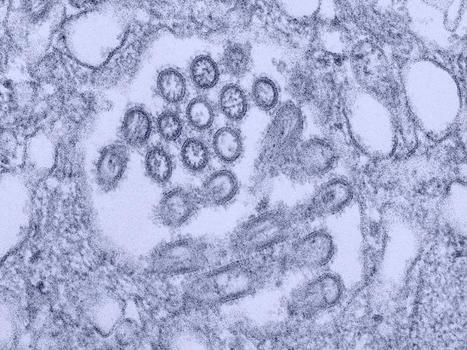
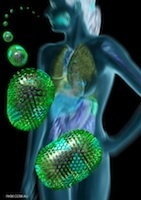

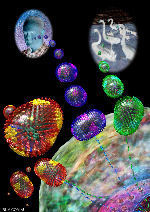
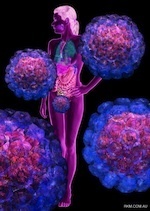

![Fainting, skin issues [the ONLY! side effects] linked to HPV shots | Virology News | Scoop.it](https://img.scoop.it/-2A9X6YJo_tF8aCzh8st4Tl72eJkfbmt4t8yenImKBVvK0kTmF0xjctABnaLJIm9)






